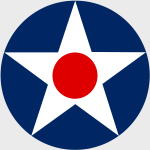Hobby Master HA8101 USN Boeing Stearman PT-17 Bi-Plane Trainer - "41-8169" (1:48 Scale)
"This nation will remain a neutral nation, but I cannot ask that every American remain neutral in thought as well. Even a neutral has a right to take account of facts, even a neutral cannot be asked to close his mind or close his conscience. I have said not once but many times that I have seen war and that I hate war; I say that again and again. I hope the United States will keep out of this war, I believe that it will. And I give you assurance and reassurance that every effort of your government will be directed toward that end. As long as it remains within my power to prevent there will be no blackout of peace in the United States."
- President Franklin Delano Roosevelt, September 5th, 1939
 The Stearman (Boeing) Model 75 is a biplane used as a military trainer aircraft, of which at least 9,783 were built in the United States during the 1930s and 1940s. Stearman Aircraft became a subsidiary of Boeing in 1934. Widely known as the Stearman, Boeing Stearman or Kaydet, it served as a primary trainer for the USAAF, as a basic trainer for the USN (as the NS & N2S), and with the RCAF as the Kaydet throughout World War II. After the conflict was over, thousands of surplus aircraft were sold on the civil market. In the immediate post-war years they became popular as crop dusters and as sports planes.
The Stearman (Boeing) Model 75 is a biplane used as a military trainer aircraft, of which at least 9,783 were built in the United States during the 1930s and 1940s. Stearman Aircraft became a subsidiary of Boeing in 1934. Widely known as the Stearman, Boeing Stearman or Kaydet, it served as a primary trainer for the USAAF, as a basic trainer for the USN (as the NS & N2S), and with the RCAF as the Kaydet throughout World War II. After the conflict was over, thousands of surplus aircraft were sold on the civil market. In the immediate post-war years they became popular as crop dusters and as sports planes.
The Kaydet was a conventional biplane of rugged construction with large, fixed tailwheel undercarriage, and accommodation for the student and instructor in open cockpits in tandem. The radial engine was usually uncowled, although some Stearman operators choose to cowl the engine, most notably the Red Baron Stearman Squadron.
Pictured here is a 1:48 scale replica of a USN Boeing Stearman PT-17 biplane trainer.
Sold Out!
Dimensions:
Wingspan: 8-inches
Length: 5-3/4-inches
Release Date: October 2011
Historical Account: "Surplus Inventory" - After World War II, thousands of PT (primary trainer)-17 Stearmans were auctioned off to civilians and former pilots. Many were modified for cropdusting use, with a hopper for pesticide or fertilizer fitted in place of the front cockpit. Additional equipment included pumps, spray bars, and nozzles mounted below the lower wings. A popular approved modification to increase the maximum takeoff weight and climb performance involved fitting a larger Pratt & Whitney R-985 engine and a constant speed propeller.








